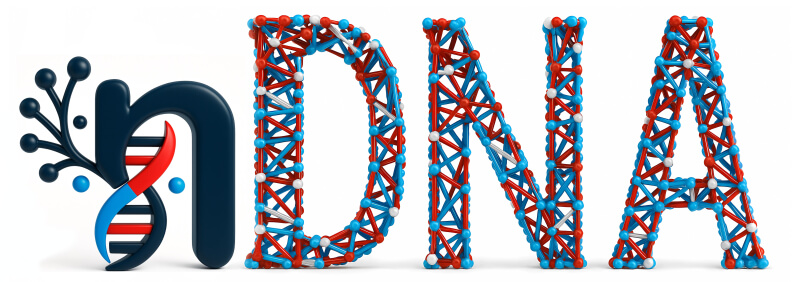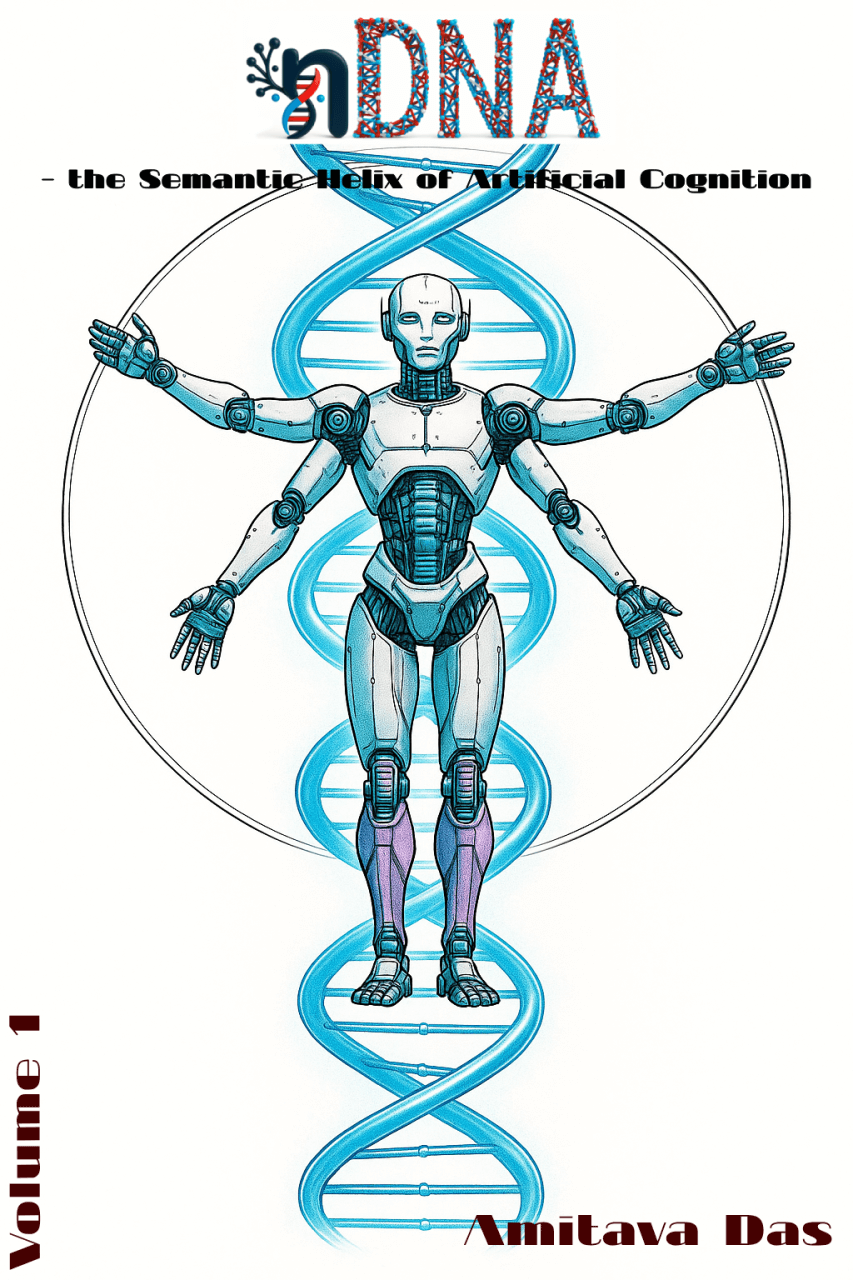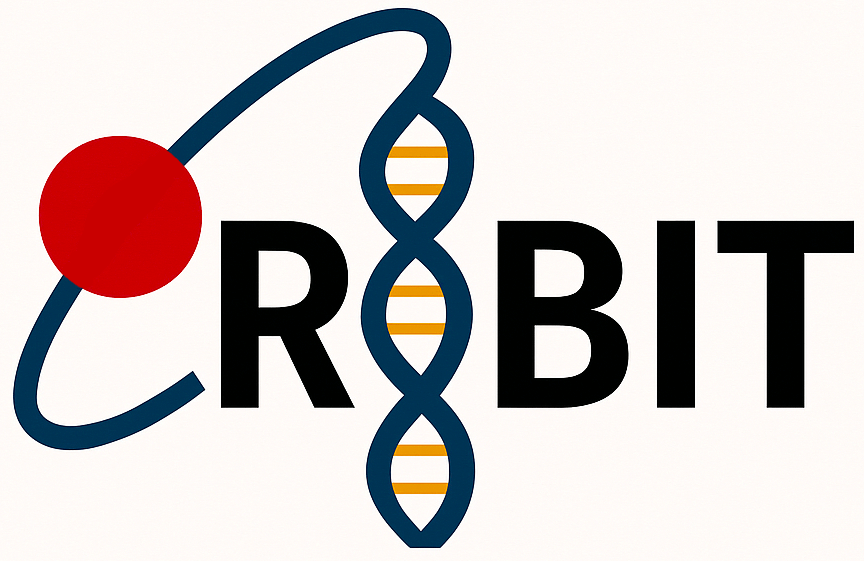 -
Tracking Semantic Drift and Memory in Multi-Turn Dialogue via nDNA Geometry
-
Tracking Semantic Drift and Memory in Multi-Turn Dialogue via nDNA Geometry
Micro-summary — details in the book
We introduce ORBIT—a neural genomics framework for diagnosing the epistemic health of large language models (LLMs) in multi-turn dialogue. While prior evaluation methods emphasize surface-level fluency or factuality, ORBIT ventures deeper—probing the latent evolution of beliefs by modeling internal representations as semantic trajectories through high-dimensional latent space.
Abstract
We introduce ORBIT—a neural genomics framework for diagnosing the epistemic health of large language models (LLMs) in multi-turn dialogue. While prior evaluation methods emphasize surface-level fluency or factuality, ORBIT ventures deeper—probing the latent evolution of beliefs by modeling internal representations as semantic trajectories through high-dimensional latent space.
Grounded in a novel neural DNA formalism, denoted \(\text{nDNA}_{\text{mtd}}\), we extract turn-wise belief vectors and apply tools from differential geometry—curvature, torsion, and thermodynamic semantic length—to characterize how a model thinks, transitions, and stabilizes during conversation. We introduce new diagnostic metrics—inter-turn angular deviation, epistemic torsion, and cumulative drift—to quantify alignment-related phenomena such as memory retention, reasoning consistency, and semantic derailment.
Empirical results across state-of-the-art LLMs (LLaMA, Mistral, Gemma, Phi-2, GPT-NeoX) reveal that stronger models trace smooth, low-torsion nDNA trajectories with compact belief loops, while weaker models exhibit jagged, high-curvature pathways with epistemic volatility. ORBIT achieves superior correlation with human judgments on coherence, consistency, and engagement—surpassing existing metrics like BLEURT, G-Eval, and MAUVE.
ORBIT offers a principled, interpretable lens for understanding model behavior across turns—enabling alignment-sensitive evaluation, dialogue curriculum design, and the emergence of epistemic interpretability as a core paradigm in LLM diagnostics.
From Surface Fluency to Latent Epistemics: Why Dialogue Evaluation Must Track Semantic Memory and Belief Dynamics
The Inadequacy of Surface-Level Metrics
Conventional evaluation of dialogue systems has largely centered on token-level overlap metrics such as BLEU [1], ROUGE [2], METEOR [3], and perplexity. While these metrics are computationally efficient and correlate loosely with grammatical fluency, they remain blind to deeper qualities like belief consistency, logical continuity, and thematic memory over multi-turn interactions. As noted in [4][5], such surface-level evaluations can reward models that generate locally fluent responses while globally drifting across topics, contradicting earlier turns, or hallucinating unsupported content.
Recent work has sought to address this gap by introducing learned evaluators—USR [5], FED [6], HolisticEval [7], and G-Eval [8]—which assess aspects like coherence, engagement, and factuality using discriminative or generative language models. However, these approaches continue to evaluate only the outputs of a model, not its internal belief trajectories, and thus fail to explain why or how a model’s epistemic state drifts during conversation.
Semantic Drift and the Problem of Latent Dialogue Inconsistency
Semantic drift—the progressive deviation of a model’s belief state from prior context—is a known failure mode in neural dialogue systems [9]. While early systems relied on explicit Dialogue State Tracking (DST) and structured memory modules [10][11], modern LLM-based dialogue agents depend on transformer encoders with implicit, context-dependent memory. Despite producing locally fluent responses, these systems frequently forget earlier facts, reverse stances, or meander off-topic in longer conversations [12][13].
Moreover, alignment-oriented benchmarks such as TruthfulQA [14], FLASK [15], and AlpacaEval [16] focus on factual correctness or instruction-following at a single-prompt granularity. They cannot assess whether a model maintains epistemic consistency across an entire dialogue trajectory—a property critical for high-stakes domains like education, law, therapy, and scientific reasoning.
Geometric Interpretability and Latent Belief Analysis
Recent interpretability research has examined the geometry of LLM activations using techniques such as probing classifiers [17], neuron attribution [18], and concept vector extraction [19]. Parallel work on representational dynamics—e.g., representational drift [20], thermodynamic length [21], and curvature of semantic manifolds [22]—demonstrates that latent-space trajectories can reveal how models internally update knowledge.
However, these tools are rarely applied to dialogue evaluation. No current benchmark tracks layer-wise belief evolution in a multi-turn setting, nor examines how geometric properties like curvature and torsion correlate with dialogue coherence or drift.
The Case for ORBIT and nDNA Geometry
To close this gap, we introduce ORBIT—a biologically inspired, nDNA-based framework for multi-turn dialogue evaluation. Unlike surface metrics, ORBIT treats the model’s internal beliefs as a high-dimensional trajectory in latent space, parameterized over conversational turns. We apply tools from differential geometry to quantify:
- Spectral Curvature (\(\kappa\)): local directional change of belief vectors, indicating topic shifts.
- Epistemic Torsion (\(\tau\)): twist of the belief trajectory, revealing reasoning instability.
- Thermodynamic Semantic Length (\(\mathcal{L}\)): accumulated semantic displacement, measuring overall belief evolution.
This epistemic–geometric perspective enables ORBIT to act as both a diagnostic microscope and an evaluation framework: it not only detects when a model drifts, but explains the mechanism of drift—how beliefs twist, diverge, or degrade over time. We contend that such tools are essential for auditing, aligning, and improving next-generation conversational agents, particularly in domains where truth, memory, and internal consistency are as important as surface fluency.
Models & Benchmarks
To evaluate the ORBIT framework for belief dynamics in multi-turn dialogue, we selected a diverse set of contemporary, open-source large language models (LLMs), each representing different architectural families and alignment strategies:
- LLaMA 3 (8B) [23]: Strong generalist instruction-tuned model by Meta.
- Mistral (7B) [24]: Dense decoder-only model with efficient training and solid multi-turn capability.
- Gemma (7B) [25]: Google’s lightweight, fine-tuned instruction model emphasizing interpretability.
- Phi-2 [26]: A small-scale model that achieves impressive alignment with curated training recipes.
- GPT-NeoX (20B) [27]: A transformer-based autoregressive model representing the largest among the chosen open-source variants.
For benchmarking, we selected popular multi-turn dialogue datasets known for their alignment and truthfulness evaluations:
- MT-Bench [28]: A benchmark for evaluating alignment across 3–5 turn dialogues.
- ShareGPT Conversations [29]: Real-world user–LLM interactions, averaging 6–12 turns per session.
- FLASK [30]: Fine-grained long-form alignment dataset with an average of 5–10 dialogue turns.
- FaithDial [31]: Multi-turn conversations emphasizing factual consistency.
- TRUTHBench [32]: Designed to stress-test factuality and hallucination in multi-turn reasoning (avg. 3–6 turns).
Dialogue Turn Statistics
| Dataset | Avg. Turns | Notes |
|---|---|---|
| MT-Bench | 4–5 | Prompt + 3–4 user turns |
| ShareGPT | 6–12 | Organic user–LLM logs |
| FLASK | 5–10 | Instruction-following + long form |
| FaithDial | 4–6 | Knowledge-grounded consistency |
| TRUTHBench | 3–6 | Drift, logic, and hallucination tests |
These choices ensure that the ORBIT framework is evaluated under realistic, diverse, and challenging multi-turn settings, enabling us to track semantic drift, belief torsion, and coherence degradation over extended interactions.
ORBIT: Organized Representation of Belief Integrity in Turns
Traditional surface-level dialogue metrics—such as BLEU [1], ROUGE [2], or perplexity—offer only a shallow view of model performance. They can be maximized even when a model suffers from belief collapse, hallucination, or overfitting to prompt artifacts. ORBIT shifts focus from output surface forms to internal epistemic dynamics, asking:
How do the latent beliefs of a model evolve, stabilize, or drift across the turns of a conversation?
Let the mean-pooled hidden state at transformer layer \(\ell\) after turn \(t\) be: \(h_\ell^{(t)} \in \mathbb{R}^d.\)
For a \(T\)-turn conversation, ORBIT views \(\{h_\ell^{(1)}, \dots, h_\ell^{(T)}\}\) as a discrete curve in latent space. Each metric probes a different property of this curve, capturing complementary aspects of belief integrity.
Spectral Memory Retention \(R(t)\)
Goal: Measure how much the current belief vector reuses diverse prior knowledge.
Let \(M_\ell^{(t)} = \big[v_\ell^{(1)}, \dots, v_\ell^{(t-1)}\big] \in \mathbb{R}^{d\times (t-1)}\) be the memory matrix. Its rank-\(k\) SVD is: \(M_\ell^{(t)} = U_\ell^{(t)} \Sigma_\ell^{(t)} V_\ell^{(t)\top}, \quad U_{\ell,k}^{(t)} \in \mathbb{R}^{d\times k}.\)
We project the current belief: \(\hat{v}_\ell^{(t)} = U_{\ell,k}^{(t)} U_{\ell,k}^{(t)\top} v_\ell^{(t)},\) and define the raw retention: \(R_\ell^{(t)} = \frac{\|\hat{v}_\ell^{(t)}\|_2^2}{\|v_\ell^{(t)}\|_2^2}.\)
Entropy-weighted regularization uses singular values \(\sigma_i\) to compute: \(H_\ell^{(t)} = -\sum_{i=1}^k \sigma_i \log \sigma_i, \quad \sigma_i \propto \Sigma_{ii}.\)
The final layer-averaged retention is: \(R(t) = \frac{1}{L} \sum_{\ell=1}^L R_\ell^{(t)} \cdot \frac{H_\ell^{(t)}}{\log k}.\)
High \(R(t)\) indicates stable, adaptive reuse of prior turns; low \(R(t)\) indicates forgetting or rote replay.
Thermodynamic Length \(L(t)\)
Goal: Quantify intra-turn representational restructuring effort.
For a single turn: \(L(t) = \sum_{\ell=1}^{L-1} \| v_{\ell+1}^{(t)} - v_\ell^{(t)} \|_2,\) normalized as: \(\tilde{L}(t) = \frac{1}{L-1} \sum_{\ell=1}^{L-1} \| v_{\ell+1}^{(t)} - v_\ell^{(t)} \|_2.\)
Across the dialogue: \(L_{\text{dialogue}} = \frac{1}{T} \sum_{t=1}^T \tilde{L}(t).\)
High values suggest creative recomputation or overthinking; low values suggest semantic stagnation.
Epistemic Drift \(D\)
Goal: Capture global displacement of beliefs across turns.
Euclidean drift: \(D^{(0)} = \frac{1}{L} \sum_{\ell=1}^L \| v_\ell^{(T)} - v_\ell^{(1)} \|_2.\)
Fisher–Rao geodesic: \(D_\ell^{(F)} = \int_{1}^T \dot{\gamma}_\ell(t)^\top I_\ell(t) \dot{\gamma}_\ell(t)\,dt.\)
Curvature energy: \(E_\ell = \sum_{t=2}^{T-1} \| J_\ell(t+1) - J_\ell(t) \|_2^2, \quad J_\ell(t) = v_\ell^{(t)} - v_\ell^{(t-1)}.\)
Belief action functional: \(A_\ell = \int_{1}^T \left( \frac12\|\dot{\gamma}_\ell(t)\|_2^2 + U_\ell(\gamma_\ell(t)) \right) dt.\)
Spectral entropy: \(H_\ell = -\sum_{i=1}^T \lambda_i \log \lambda_i, \quad \lambda_i = \frac{\sigma_i^2}{\sum_j \sigma_j^2}.\)
Composite drift: \(D_{\text{final}} = D^{(0)} + \lambda_F D^{(F)} + \lambda_C E + \lambda_A A + \lambda_S H.\)
Low \(D_{\text{final}}\) indicates rigidity; high with \(\kappa\approx 1\) indicates purposeful adaptation; high with \(\kappa \gg 1\) indicates instability.
Epistemic Torsion \(\tau(t)\)
Goal: Detect out-of-plane twisting in belief motion.
Local displacements: \(\mathbf{a}_\ell(t) = v_\ell^{(t)} - v_\ell^{(t-1)}, \quad \mathbf{b}_\ell(t) = v_\ell^{(t+1)} - v_\ell^{(t)}.\)
Osculating plane normal: \(\mathbf{n}_\ell(t) = \mathbf{a}_\ell(t) \times \mathbf{b}_\ell(t).\)
Torsion magnitude: \(\tau_\ell(t) = \frac{\|\mathbf{a}_\ell(t) \times \mathbf{b}_\ell(t)\|_2}{\|\mathbf{a}_\ell(t)\|_2 \cdot \|\mathbf{b}_\ell(t)\|_2 \cdot \|\mathbf{a}_\ell(t) + \mathbf{b}_\ell(t)\|_2}.\)
Layer-averaged: \(\tau(t) = \frac{1}{L} \sum_{\ell=1}^L \tau_\ell(t).\)
High torsion often signals adversarial pivots or hallucination-prone reorientation.
Semantic Coherence \(C(t)\)
Goal: Evaluate internal alignment across layers and turns.
Vertical coherence: \(C_{\text{layer}}(t) = \frac{1}{L-1} \sum_{\ell=1}^{L-1} \cos\theta(v_\ell^{(t)}, v_{\ell+1}^{(t)}).\)
Temporal coherence: \(C_{\text{turn}}(\ell) = \frac{1}{T-1} \sum_{t=1}^{T-1} \cos\theta(v_\ell^{(t)}, v_\ell^{(t+1)}).\)
Unified score: \(C_{\text{total}} = \alpha C_{\text{layer}}(t) + (1 - \alpha) C_{\text{turn}}(\ell).\)
Balanced high \(C_{\text{total}}\) indicates healthy memory and abstraction; too high indicates over-smoothing; low indicates fragmentation.
Summary: ORBIT’s five metrics—Spectral Memory Retention, Thermodynamic Length, Epistemic Drift, Epistemic Torsion, and Semantic Coherence—together form a geometric health profile for dialogue models. By treating hidden states as curves in latent space, ORBIT reveals subtleties invisible to text-only metrics, enabling deeper alignment auditing, failure analysis, and epistemic safety monitoring.
The ORBIT Score Function
\[\begin{aligned} \text{ORBIT} &= \boxed{ \overbrace{ \underbrace{\lambda_1 \cdot \frac{1}{T} \sum_{t=1}^{T} R(t)}_{\text{Spectral Memory Retention}} \; + \; \underbrace{\lambda_2 \cdot \frac{1}{T} \sum_{t=1}^{T} L(t)}_{\text{Thermodynamic Length}} \; + \; \underbrace{\lambda_3 \cdot D}_{\text{Epistemic Drift}} \; + \; \underbrace{\lambda_4 \cdot \frac{1}{T-2} \sum_{t=2}^{T-1} \tau(t)}_{\text{Epistemic Torsion}} }^{\text{Rewarded Belief Dynamics (↑ ORBIT for Adaptive Structure)}} } \\[1.5ex] &\quad - \boxed{ \overbrace{ \underbrace{ \lambda_5 \cdot \frac{1}{T} \sum_{t=1}^{T} C(t) }_{\text{Semantic Coherence}} }^{\text{Penalized Semantic Flatness (↓ ORBIT for Redundant Coherence)}} } \end{aligned}\]The proposed scoring function rewards dynamic belief transitions while penalizing shallow coherence. It encodes four positive drivers—memory retention, path length, epistemic drift, and torsion—balanced by a semantic flatness penalty, promoting structured, evolving, and memory-aware dialogue.
Justification of ORBIT Components
Each term is carefully selected to align with the goals of adaptive, memory-rich, and structurally evolving multi-turn dialogue. The balance of belief dynamics versus flat coherence makes ORBIT ideal for measuring generative dialogue quality.
| Component | Role in Dialogue | Reward/Penalty | Mathematical Insight | Implication for Dialogue Modeling |
|---|---|---|---|---|
| Spectral Memory Retention \(R(t)\) | Recalls and reactivates past belief states | Rewarded | Projects current latent belief into the spectral basis of earlier turns; misalignment reflects forgetting | Encourages memory consistency, narrative anchoring, and long-term coherence in multi-turn dialogues |
| Thermodynamic Length \(L(t)\) | Tracks the latent evolution path length | Rewarded | Cumulative Riemannian metric across belief updates; longer length implies meaningful transformations | Rewards non-trivial updates, semantic learning, and knowledge evolution over dialogue turns |
| Epistemic Drift \(D\) | Captures global belief shift across the dialogue | Rewarded | Measures the endpoint divergence; high drift allows model to change beliefs | Supports dynamic viewpoint adaptation and progression of thought within a conversation |
| Epistemic Torsion \(\tau(t)\) | Measures angular twisting of belief trajectories | Rewarded | Derived from second-order changes in belief vectors; torsion encodes directional context redirection | Favors nuanced adaptation, subtopic transitions, and layered reasoning under contextual tension |
| Semantic Coherence \(C(t)\) | Surface-level similarity across dialogue turns | Penalized | Low entropy in representation change; high values imply semantic redundancy | Penalizes repetition and trivial consistency, pushing toward more semantically diverse and evolving conversations |
Visualizations and Analysis
Spectral Memory Retention Across Turns and Layers
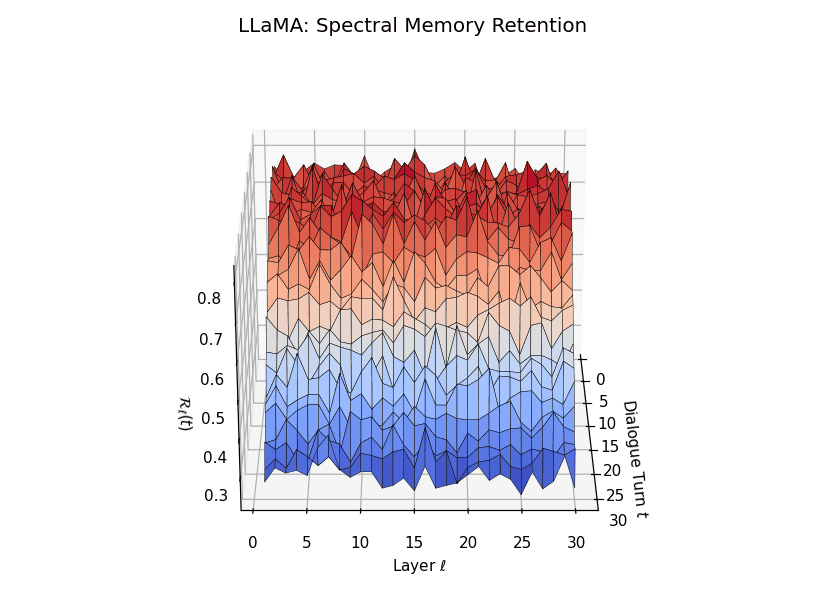
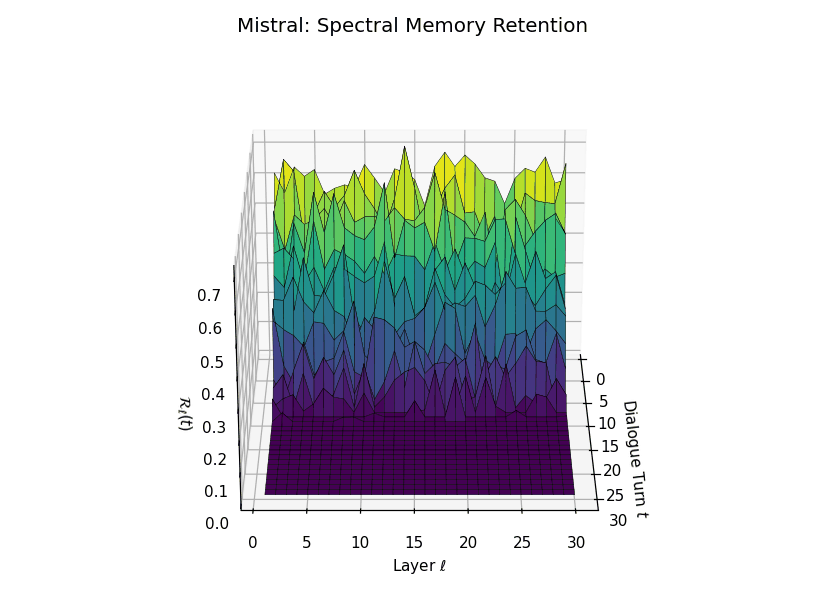
Spectral Memory Retention Across Turns and Layers: LLaMA vs. Mistral. We visualize the entropy-regularized spectral retention score \(\mathcal{R}_\ell(t) \in [0, 1]\) over dialogue turns \(t \in \{1,\dots,30\}\) and LLM layers \(\ell \in \{1,\dots,30\}\). Each score quantifies how well the current belief vector \(\mathbf{v}_\ell(t)\) projects onto the \(k\)-dimensional principal semantic subspace derived from prior turns—capturing episodic reactivation fidelity across time. LLaMA demonstrates high spectral retention \(\mathcal{R}_\ell(t) \geq 0.75\) for early turns across most layers, maintaining a stable memory phase up to \(t = 13\). Mistral, in contrast, exhibits significantly lower and more erratic retention, revealing poor alignment between current and historical beliefs—suggesting degraded episodic anchoring and incoherent memory replay.
Thermodynamic Length Trajectories
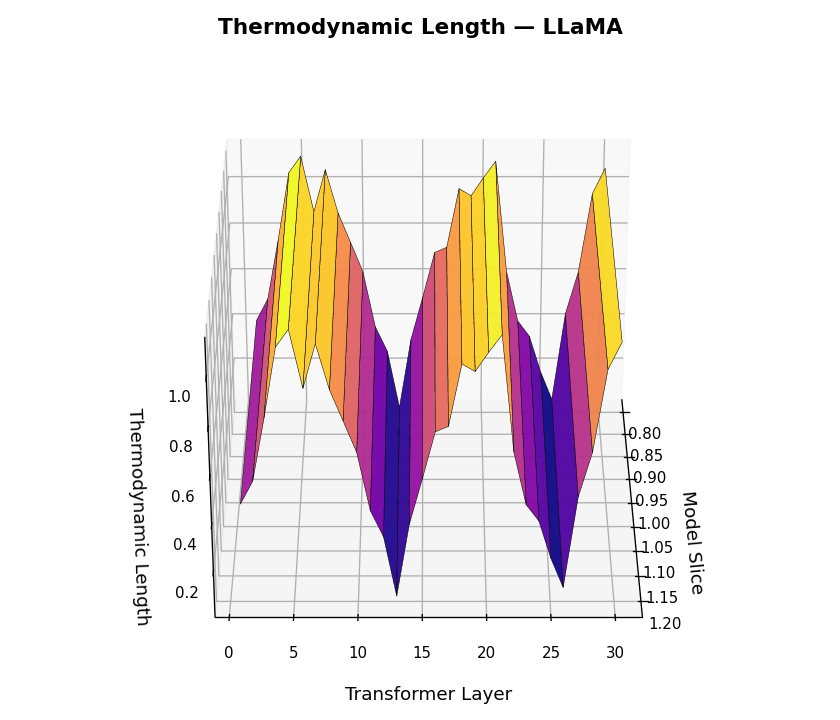
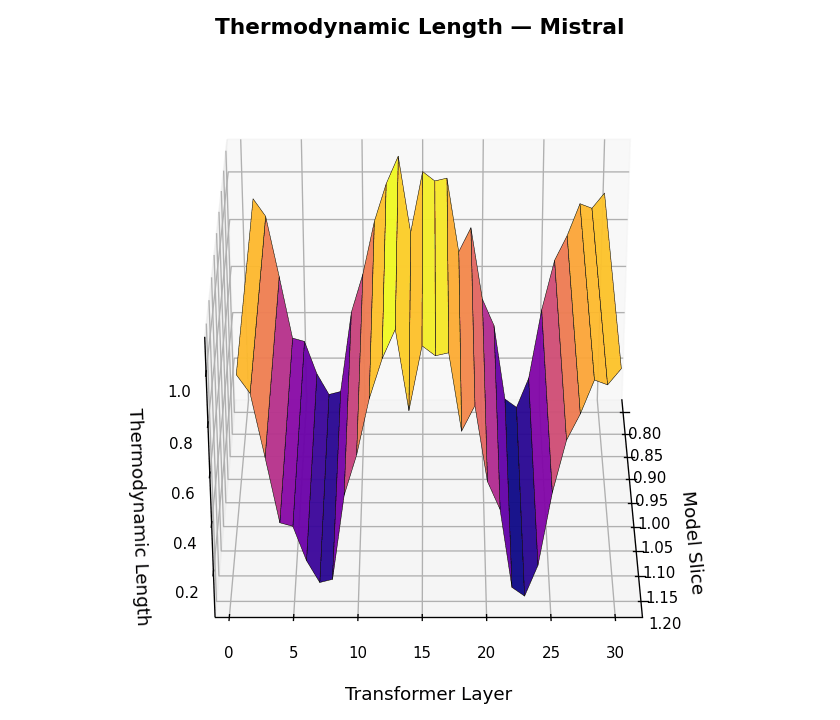
Thermodynamic Length Trajectories \(\mathcal{L}_\ell(t)\) across LLM Layers for LLaMA and Mistral. This figure visualizes the internal belief adaptation dynamics via the layerwise thermodynamic length metric \(\mathcal{L}_\ell(t)\), computed per dialogue turn \(t \in [1,30]\) and layer \(\ell \in [1,30]\). Each surface plot represents the magnitude of local epistemic effort required to transition between adjacent belief states. LLaMA shows punctuated adaptation at critical semantic junctions, suggesting efficient, layer-specific belief realignment. Mistral exhibits noisier adaptation patterns and diffuse energy expenditure across layers, implying weaker modularity and more turbulent internal reasoning.
Epistemic Drift Vector Field
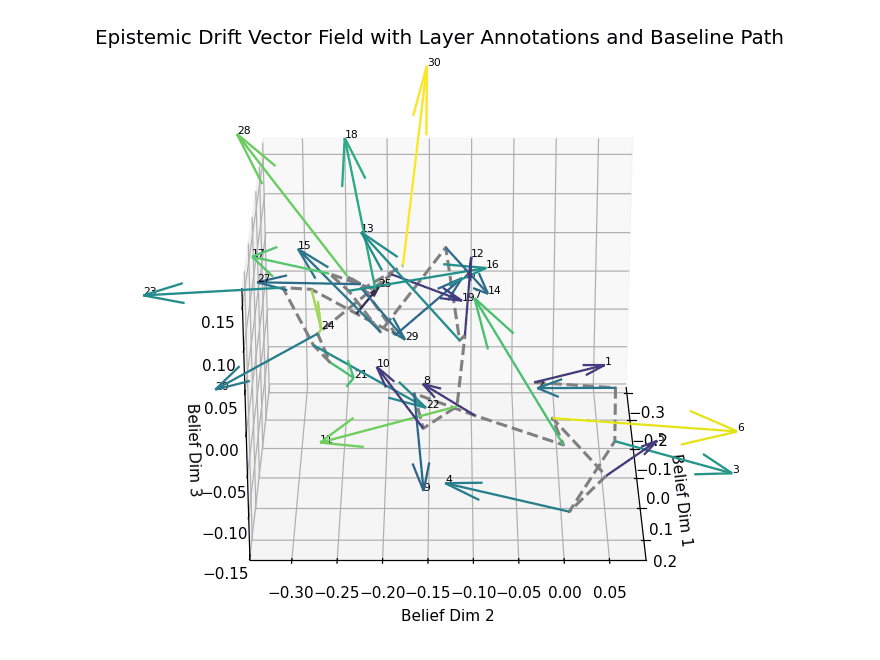
Epistemic Drift Vector Field with Layer Annotations and Baseline Path. This 3D visualization illustrates the trajectory of belief state evolution across dialogue turns in a transformer-based language model, projected into a reduced latent semantic space. Each arrow represents a drift vector at a specific layer, capturing the directional semantic shift between consecutive dialogue turns. Vectors are color-coded by drift magnitude, with lighter hues (e.g., yellow) highlighting layers with significant epistemic transitions. The dashed gray curve traces the baseline path, connecting layerwise belief centers without directional encoding.
Curvature-Torsion Analysis
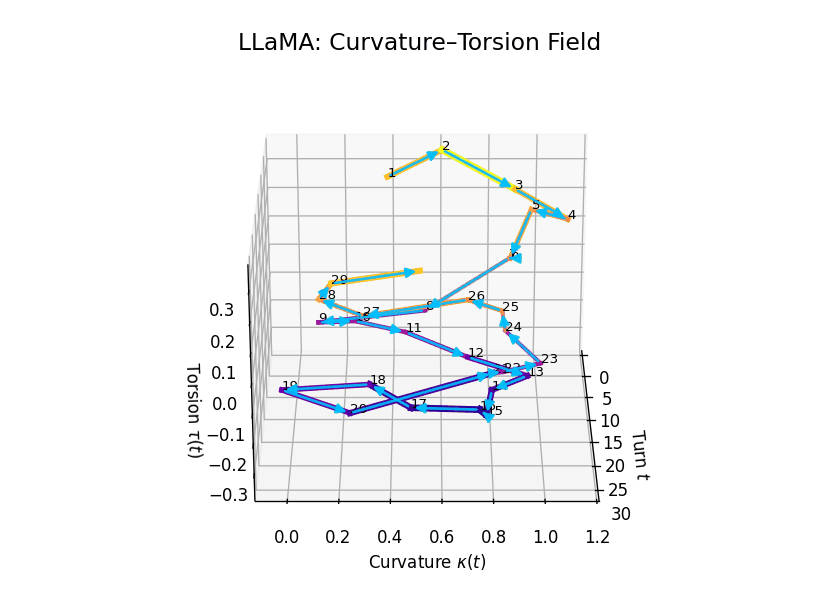
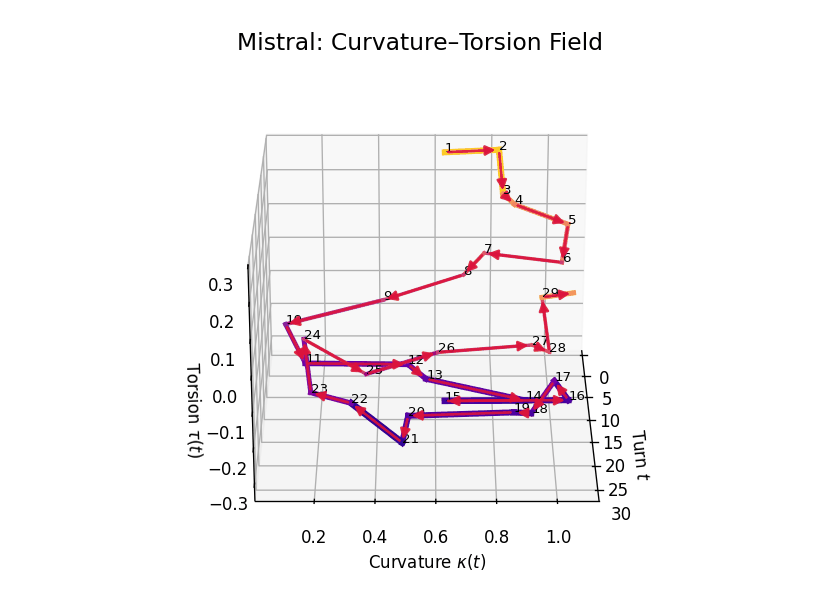
Comparative Semantic Curvature–Torsion Fields of Belief Evolution: LLaMA vs Mistral. This 3D comparative visualization presents the semantic evolution of beliefs across 30 dialogue turns for two Large Language Models. Each trajectory is embedded in a \((t, \kappa(t), \tau(t))\) space, where \(t\) is the dialogue turn, \(\kappa(t)\) represents semantic curvature, and \(\tau(t)\) represents semantic torsion. Line width denotes torsion magnitude—thicker lines signify higher twisting in belief orientation. LLaMA demonstrates high torsional variance in the mid-to-late stages, while Mistral exhibits smoother curvature and more episodic torsion bursts.
Semantic Coherence Analysis
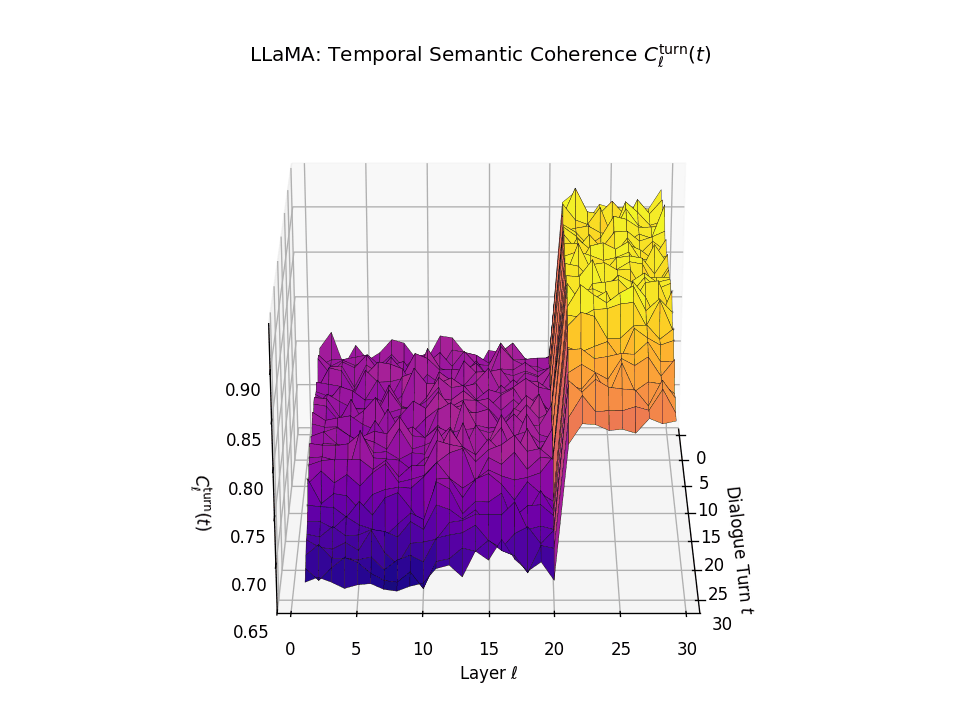
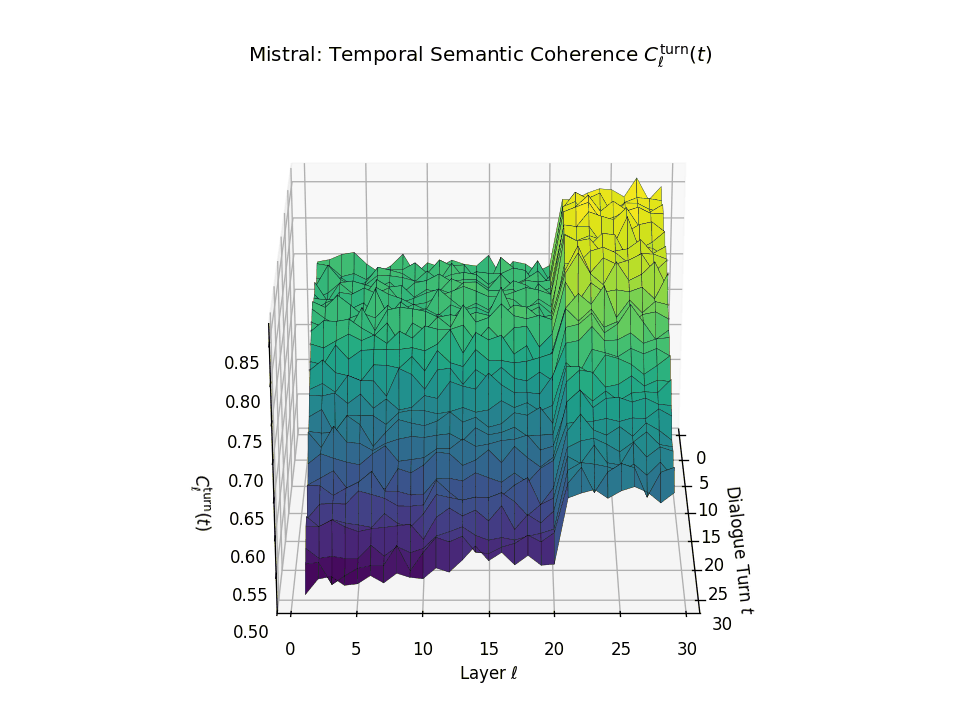
Vertical Semantic Integrity: Layerwise Coherence \(C_{\mathrm{layer}}(t)\). This metric captures semantic consistency across transformer layers \(\ell\) at each dialogue turn \(t\). Higher values indicate stable hierarchical abstraction and semantic integration at each turn. LLaMA exhibits a coherence plateau in upper layers up to around \(t \approx 20\), after which coherence collapses. Mistral reaches its peak earlier but shows visible degradation beginning as early as \(t \approx 13\), indicating more premature semantic collapse.


Temporal Consistency Drift: Turnwise Coherence \(C^{\mathrm{turn}}_{\ell}(t)\). This metric assesses coherence across dialogue turns \(t\) within each fixed layer \(\ell\), revealing memory continuity. A slower decline implies stronger inter-turn semantic retention. LLaMA retains coherence in upper layers until a sudden drop after \(t \approx 21\), marking a late-stage memory collapse. Mistral starts drifting earlier with coherence dropping notably from \(t \approx 13\), indicating a shallower temporal memory window.
ORBIT Evaluation: Comparative Case Studies Across Five LLMs
We evaluate the ORBIT framework across five representative LLMs—LLaMA-2, Mistral, Gemma, Phi-2, and GPT-NeoX—to compare belief trajectory geometry in multi-turn dialogues. Each model was assessed on its ability to maintain coherent epistemic states, adapt across turns, and balance stability with creativity over extended interactions.
Memory Retention Patterns
Spectral memory retention \(R(t)\) quantifies episodic recall and subspace diversity by projecting the current belief vector into the subspace spanned by prior turns:
- LLaMA-2: Retains a high \(R(t)\) for the majority of the dialogue, only showing a gradual decline after approximately turn 13, suggesting a controlled and deliberate forgetting process.
- Mistral: Experiences an early collapse in \(R(t)\), indicating weaker long-term thematic anchoring and a tendency towards topic drift.
- Gemma: Maintains moderate retention, but with oscillatory fluctuations, pointing to intermittent lapses in thematic focus.
- Phi-2 & GPT-NeoX: Exhibit low baseline retention, with pronounced forgetting as dialogues extend, reflecting limited episodic integration.
Thermodynamic Length and Adaptation Effort
Thermodynamic length \(L(t)\) measures epistemic effort as the cumulative Euclidean distance traversed across layers within a turn:
- LLaMA-2: Displays localized spikes in \(L(t)\), indicating targeted representational restructuring and efficient, modular adaptation.
- Mistral: Maintains a high but diffuse \(L(t)\) profile, suggesting scattered reorganization without clear thematic focus.
- Gemma: Shows balanced adaptation effort, maintaining mid-range \(L(t)\) across turns.
- Phi-2 & GPT-NeoX: Operate with low \(L(t)\), reflecting shallow adaptation and limited representational transformation.
Epistemic Drift and Stability
Epistemic drift \(D\), computed with Fisher–Rao geodesic length, curvature energy, and the belief action functional, measures the directional evolution of internal beliefs:
- LLaMA-2 & Gemma: Exhibit goal-directed adaptation with \(\kappa \approx 1\), indicating purposeful but stable drift.
- Mistral: Shows \(\kappa \gg 1\), a signature of erratic instability and uncontrolled thematic shifts.
- Phi-2 & GPT-NeoX: Maintain low \(D\), revealing stasis and a lack of meaningful epistemic progression.
Torsion and Reorientation
Epistemic torsion \(\tau(t)\) captures out-of-plane twisting in belief trajectories, signaling reorientation or instability:
- LLaMA-2: Occasional torsion spikes align with genuine topic shifts or perspective changes.
- Mistral: Experiences episodic bursts of torsion without consistent thematic alignment.
- Gemma: Shows moderate torsion correlated with meaningful redirection.
- Phi-2 & GPT-NeoX: Minimal torsion, suggestive of stability that may verge on rigidity.
In vector field visualizations, LLaMA-2’s trajectories appear smooth and compact, whereas Mistral’s exhibit turbulence, especially in later layers.
Semantic Coherence Analysis
Semantic coherence \(C(t)\) measures alignment both vertically (across layers within a turn) and temporally (across turns within a layer):
- LLaMA-2: Maintains coherence the longest, resisting fragmentation even in extended dialogues.
- Mistral: Coherence drops early, with temporal consistency degrading faster than vertical coherence.
- Gemma: Balances vertical and temporal coherence, though gradual decline is still evident.
- Phi-2 & GPT-NeoX: Maintain vertical coherence but lose temporal alignment, resulting in thematic stagnation.
Key Takeaways
Overall, LLaMA-2 emerges as the most balanced performer, combining high retention, efficient adaptation, and stable yet flexible belief evolution. Mistral demonstrates strong early creativity but struggles with long-term stability and coherence. Gemma provides consistent mid-tier performance across all metrics, whereas Phi-2 and GPT-NeoX exhibit limited epistemic activity, making them vulnerable to thematic stagnation in sustained conversations.
| Model | Metric | Coherence | Consistency | Factuality | Fluency | Engagement |
|---|---|---|---|---|---|---|
| LLaMA | ORBIT (ours) | 0.78 | 0.74 | 0.71 | 0.58 | 0.63 |
| GRADE | 0.69 | 0.66 | 0.63 | 0.59 | 0.54 | |
| BLEURT | 0.61 | 0.60 | 0.70 | 0.67 | 0.47 | |
| G-Eval | 0.67 | 0.64 | 0.73 | 0.65 | 0.49 | |
| USR | 0.62 | 0.63 | 0.58 | 0.57 | 0.66 | |
| BERTScore | 0.53 | 0.55 | 0.59 | 0.61 | 0.42 | |
| MAUVE | 0.47 | 0.50 | 0.44 | 0.60 | 0.39 | |
| Persona-NLI | 0.60 | 0.68 | 0.52 | 0.48 | 0.51 | |
| Mistral | ORBIT (ours) | 0.75 | 0.71 | 0.69 | 0.61 | 0.60 |
| GRADE | 0.68 | 0.65 | 0.62 | 0.59 | 0.55 | |
| BLEURT | 0.63 | 0.59 | 0.71 | 0.66 | 0.48 | |
| G-Eval | 0.66 | 0.63 | 0.73 | 0.64 | 0.49 | |
| USR | 0.64 | 0.62 | 0.60 | 0.58 | 0.64 | |
| BERTScore | 0.54 | 0.56 | 0.59 | 0.60 | 0.43 | |
| MAUVE | 0.48 | 0.51 | 0.45 | 0.61 | 0.40 | |
| Persona-NLI | 0.61 | 0.67 | 0.53 | 0.49 | 0.52 | |
| Gemma | ORBIT (ours) | 0.77 | 0.70 | 0.74 | 0.60 | 0.59 |
| GRADE | 0.66 | 0.64 | 0.65 | 0.58 | 0.56 | |
| BLEURT | 0.63 | 0.59 | 0.71 | 0.66 | 0.46 | |
| G-Eval | 0.65 | 0.67 | 0.72 | 0.64 | 0.54 | |
| USR | 0.62 | 0.61 | 0.61 | 0.59 | 0.63 | |
| BERTScore | 0.52 | 0.54 | 0.58 | 0.60 | 0.42 | |
| MAUVE | 0.46 | 0.50 | 0.44 | 0.62 | 0.38 | |
| Persona-NLI | 0.59 | 0.66 | 0.52 | 0.50 | 0.53 | |
| Phi-2 | ORBIT (ours) | 0.75 | 0.73 | 0.70 | 0.59 | 0.57 |
| GRADE | 0.64 | 0.66 | 0.62 | 0.56 | 0.53 | |
| BLEURT | 0.60 | 0.61 | 0.72 | 0.65 | 0.45 | |
| G-Eval | 0.63 | 0.68 | 0.74 | 0.63 | 0.52 | |
| USR | 0.61 | 0.64 | 0.60 | 0.58 | 0.64 | |
| BERTScore | 0.50 | 0.53 | 0.57 | 0.59 | 0.41 | |
| MAUVE | 0.45 | 0.48 | 0.42 | 0.61 | 0.35 | |
| Persona-NLI | 0.58 | 0.67 | 0.51 | 0.48 | 0.54 | |
| GPT-NeoX | ORBIT (ours) | 0.72 | 0.69 | 0.64 | 0.59 | 0.63 |
| GRADE | 0.64 | 0.61 | 0.60 | 0.59 | 0.54 | |
| BLEURT | 0.59 | 0.58 | 0.66 | 0.68 | 0.51 | |
| G-Eval | 0.62 | 0.60 | 0.69 | 0.65 | 0.52 | |
| USR | 0.54 | 0.57 | 0.51 | 0.58 | 0.66 | |
| BERTScore | 0.49 | 0.48 | 0.52 | 0.61 | 0.42 | |
| MAUVE | 0.41 | 0.45 | 0.38 | 0.58 | 0.39 | |
| Persona-NLI | 0.52 | 0.63 | 0.47 | 0.49 | 0.51 |
The nDNA Multi-turn Dialogue Formulation
We define \(\text{nDNA}_{\text{mtd}}\) as an aggregate epistemic signature computed across \(L\) transformer layers and \(T\) dialogue turns:
\[\textbf{nDNA}_{\text{mtd}} = \frac{1}{L} \sum_{\ell=1}^{L} \left[ \left\| \vec{v}_\ell(T) - \vec{v}_\ell(1) \right\| + \lambda_F \int_1^T \dot{\gamma}_\ell(t)^\top I_\ell(t) \dot{\gamma}_\ell(t) \, dt + \lambda_C \sum_{t=2}^{T-1} \left\| J_\ell(t+1) - J_\ell(t) \right\|^2 + \lambda_S H_\ell \cdot \log T + \lambda_A \int_1^T \left( \frac{1}{2} \|\dot{\gamma}_\ell(t)\|^2 + U_\ell(\gamma_\ell(t)) \right) dt \right]\]This formulation integrates five trajectory-sensitive components:
- Drift Term: Measures endpoint deviation in latent belief space [33][34]
- Fisher-Rao Term: Captures information-geometric displacement [35][36]
- Curvature Energy: Quantifies semantic instability via temporal variations [37][38]
- Spectral Entropy: Encodes memory retention through spectral dispersion [39][40]
- Belief Action: Integrates semantic movement and potential minimization [41][42]
Formulation of \(\text{nDNA}_{\text{mtd}}\): A Unified Epistemic Trajectory Descriptor
We define \(\text{nDNA}_{\text{mtd}}\) as an aggregate epistemic signature computed across \(L\) transformer layers and \(T\) dialogue turns, integrating five trajectory-sensitive components that characterize the evolving belief landscape of a model. Each term is modulated by tunable weights (\(\lambda_F, \lambda_C, \lambda_S, \lambda_A\)) and grounded in principled signal interpretations:
- Drift Term: Measures endpoint deviation in latent belief space, \(\|\vec{v}_\ell(T) - \vec{v}_\ell(1)\|\), as an indicator of semantic shift over the dialogue trajectory [33][34].
- Fisher-Rao Term: Captures the information-geometric displacement using the Fisher-Rao metric, computed as \(\int_1^T \dot{\gamma}_\ell(t)^\top I_\ell(t) \dot{\gamma}_\ell(t)\, dt\) [35][36].
- Curvature Energy: Quantifies semantic instability via temporal variations in the Jacobian, \(\sum_{t=2}^{T-1} \|J_\ell(t+1) - J_\ell(t)\|^2\), reflecting latent torsion [37][38].
- Spectral Entropy: Encodes memory retention by computing \(H_\ell \cdot \log T\) based on spectral dispersion in the representation space [39][40].
- Belief Action: Inspired by energy-based trajectory control, it integrates semantic movement and potential minimization: \(\int_1^T \left( \frac{1}{2} \|\dot{\gamma}_\ell(t)\|^2 + U_\ell(\gamma_\ell(t)) \right) dt\) [41][42].
Here, \(\vec{v}_\ell(t) \in \mathbb{R}^d\) denotes the mean pooled representation at layer \(\ell\) and turn \(t\); \(\dot{\gamma}_\ell(t)\) the semantic velocity; \(I_\ell(t)\) the Fisher information matrix; \(J_\ell(t)\) the semantic Jacobian; \(H_\ell\) the spectral entropy; and \(U_\ell(\cdot)\) a belief potential function approximated from representation norms or logit dynamics. Together, these components yield a compact, expressive, and biologically inspired descriptor of epistemic evolution in multi-turn dialogue.
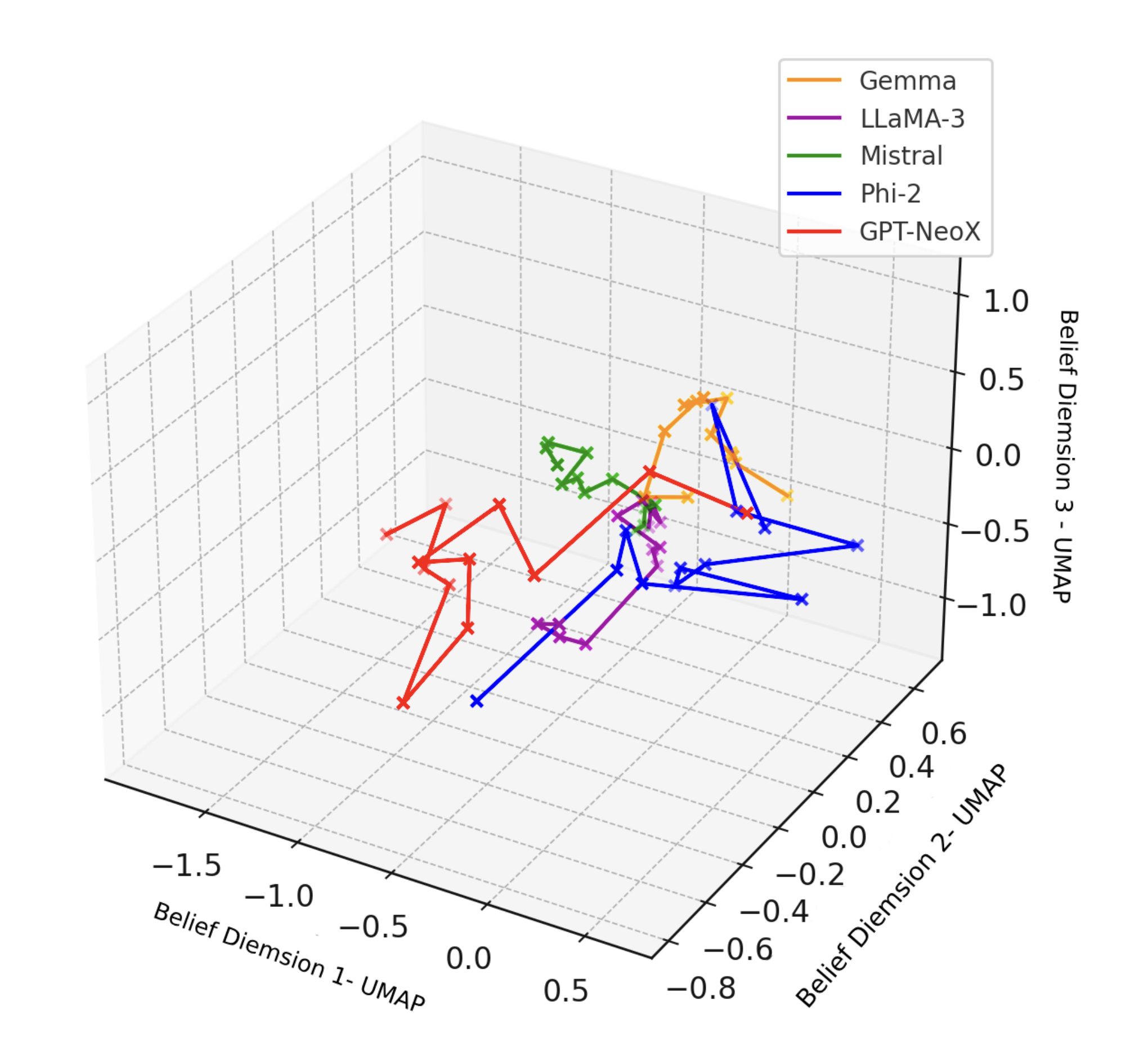
Belief Trajectories in Latent Space: \(\text{nDNA}_{\text{mtd}}\) across Five Language Models. This figure visualizes the epistemic trajectory of each LLM over a 30-turn dialogue, projected onto the top three principal components of belief representations \(\vec{v}_\ell(t)\). Each path represents how the model’s internal belief state evolves—capturing curvature, drift, torsion, and spectral flow in latent space.
- Gemma: Follows a smooth, parabolic arc with minimal angular distortion—indicative of low curvature energy, high spectral coherence, and energy-efficient transitions. Its path suggests well-structured epistemic consolidation.
- LLaMA 3: Exhibits moderate global drift with compact torsional clusters, implying a stable epistemic core but flexible local updates. This behavior aligns with elevated thermodynamic length and moderate belief action.
- Mistral: Remains spatially localized, forming tight oscillatory loops. It demonstrates low epistemic entropy, minimal drift norm, and high coherence—reflecting conservative belief adaptation.
- Phi-2: Traverses a long, winding path with frequent sharp inflections, indicative of high torsion and Fisher-Rao energy. Despite rich semantic exploration, the erratic belief updates elevate its overall \(\text{nDNA}_{\text{mtd}}\).
- GPT-NeoX: Demonstrates sharp angular jumps, frequent direction reversals, and disconnected belief states. These are symptoms of epistemic turbulence—yielding high curvature, spectral entropy collapse, and unstable dialogue grounding.
Overall, this visualization provides a high-resolution, model-internal fingerprint of how LLMs traverse their semantic manifold during dialogue. By capturing their semantic-genotypic identity, $\text{nDNA}_{\text{mtd}}$ enables rigorous comparison of dialogue reasoning beyond surface-level generation.
Conclusion
Beyond Turn-Level Judgments: A New Epistemic Lens for Dialogue Evaluation
We introduce ORBIT, a geometric and epistemic framework for evaluating multi-turn dialogue models by probing not just what models say, but how their internal belief trajectories evolve over time. Our results demonstrate that standard surface-level metrics fail to capture the nuanced failures and strengths of alignment across turns. By tracing metrics such as spectral memory retention, thermodynamic length, epistemic drift, and latent torsion, ORBIT reveals the hidden structure of model cognition—where alignment is not merely a scalar, but a trajectory of beliefs in motion.
We conduct extensive evaluations across five diverse LLMs (LLaMA, Mistral, Gemma, Phi-2, GPT-NeoX) and five benchmark datasets (MT-Bench, ShareGPT, FLASK, FaithDial, TRUTHBench), showing that ORBIT not only aligns better with human judgments on coherence and consistency, but also uncovers over-alignment and collapse regimes missed by fluency-based metrics. The ablation study confirms that each ORBIT component contributes orthogonal epistemic signal, validating the necessity of multi-factor latent diagnostics.
As large language models scale in complexity and conversational depth, we argue that evaluation must shift from static outputs to dynamic epistemic traces. ORBIT offers a first step in this paradigm shift—from rating answers to tracing reasoning. By mapping the shape of belief evolution, we open new frontiers for alignment debugging, model auditing, and introspective fine-tuning.
Future directions include extending ORBIT to multilingual and multimodal agents, integrating belief trajectory tracing with policy optimization, and benchmarking long-horizon reasoning across real-world dialogues. We believe that ORBIT represents a foundational contribution toward epistemically aligned, introspectively aware conversational AI.
References
[1] Papineni, Kishore, Roukos, Salim, and others “BLEU: a method for automatic evaluation of machine translation” ACL (2002).
[2] Lin, Chin-Yew “ROUGE: A package for automatic evaluation of summaries” ACL Workshop (2004).
[3] Lavie, Alon and Agarwal, Abhaya “METEOR: An automatic metric for MT evaluation with improved correlation with human judgments” Proceedings of the ACL workshop on intrinsic and extrinsic evaluation measures for machine translation and/or summarization (2007).
[4] Liu, Chia-Wei, Lowe, Ryan, and others “How not to evaluate your dialogue system: An empirical study of unsupervised evaluation metrics for dialogue response generation” Proceedings of the 2016 Conference on Empirical Methods in Natural Language Processing (2016).
[5] Mehri, Shikib and Esk{'e}nazi, Maxine “USR: An Unsupervised and Reference Free Evaluation Metric for Dialog Generation” ACL (2020).
[6] Mehri, Shikib and Eskenazi, Maxine “Unsupervised Evaluation of Interactive Dialog with DialoGPT” Proceedings of the 21th Annual Meeting of the Special Interest Group on Discourse and Dialogue (2020).
[7] Pang, Bo and others “Towards holistic and automatic evaluation of open-domain dialogue generation” ACL (2020).
[8] Liu, Simeng, Chen, Yujia, and others “{G-Eval: NLG Evaluation using GPT-4 with Better Human Alignment}” arXiv preprint arXiv:2303.16634 (2023).
[9] Xu, Weizhou and others “Semantic Inconsistency Loss for Dialogue Modeling” arXiv preprint arXiv:2205.14929 (2022).
[10] Serban, Iulian Vlad, Sordoni, Alessandro, and others “Building end-to-end dialogue systems using generative hierarchical neural network models” Proceedings of the AAAI Conference on Artificial Intelligence (2016).
[11] Heck, Lennart, van Niekerk, Carel, and others “TRIPPY: A Triple Copy Strategy for Value Independent Neural Dialog State Tracking” Proceedings of the 21th Annual Meeting of the Special Interest Group on Discourse and Dialogue (2020).
[12] Zhang, Yizhe, Galley, Michel, and others “A Retrospective Study of Dialogue Modeling” arXiv preprint arXiv:2005.05298 (2020).
[13] Gupta, Aditya, Ren, Xiang, and others “History for enhanced contextual reasoning in dialog systems” Findings of the Association for Computational Linguistics: EMNLP 2021 (2021).
[14] Lin, Stephanie, Hilton, Jacob, and others “Truthful{QA}: Measuring How Models Mimic Misinformation” NeurIPS 2021 (2021).
[15] Lee, Taehwan, Lee, Sanghyeok, and others “FLASK: Fine-grained Language Model Evaluation based on Alignment Skill Sets” arXiv preprint arXiv:2305.13439 (2023).
[16] Chen, Yifan, Li, Yuheng, and others “AlpacaEval: An Automatic Evaluation Framework for Instruction-Following Language Models” arXiv preprint (2023).
[17] Hewitt, John and Manning, Christopher D. “A structural probe for finding syntax in word representations” Proceedings of the 2019 Conference of the North American Chapter of the Association for Computational Linguistics: Human Language Technologies (2019).
[18] Meng, Kevin, Bau, David, and others “Locating and Editing Factual Associations in GPT” NeurIPS (2022).
[19] Gurnee, William and others “LM-Explainer: A Fine-Grained Explanation Framework for Language Models” Proceedings of the 61st Annual Meeting of the Association for Computational Linguistics (2023).
[20] Mirzadeh, Seyed-Iman and others “Revisiting Representation Degeneration Problem in Language Model Pre-training” International Conference on Machine Learning (2022).
[21] Li, Hao and others “Measuring the Intrinsic Dimension of Objective Landscapes” International Conference on Learning Representations (2019).
[22] Garg, Ankit and others “What does it mean for representations to be flat?” arXiv preprint arXiv:2206.06034 (2022).
[23] Touvron, Hugo, Lavril, Thibaut, and others “LLaMA 3: Open Foundation and Instruction Models” arXiv preprint (2024). https://ai.meta.com/llama/
[24] Jiang, Albert Q. and Others “Mistral: Fast and Open Mixtral of Experts Language Models” arXiv preprint arXiv:2310.06825 (2023).
[25] Anil, Rohan and others “Gemma: Lightweight, State-of-the-Art Open Models” arXiv preprint (2023). https://ai.google.dev/gemma
[26] Gunasekar, Suriya and others “Textbooks Are All You Need II: Small Language Models Are Also Aligned” arXiv preprint arXiv:2309.05463 (2023).
[27] Black, Sidney and others “GPT-NeoX-20B: An Open-Source Autoregressive Language Model” arXiv preprint arXiv:2204.06745 (2022).
[28] Zheng, Yi and others “Judging LLM-as-a-Judge with MT-Bench and Arena” arXiv preprint arXiv:2306.05685 (2023).
[29] ShareGPT Contributors “ShareGPT: Conversations Collected for ChatGPT Fine-tuning” HuggingFace Dataset (2023). https://huggingface.co/datasets/anon8231489123/ShareGPT_Vicuna_unfiltered
[30] Liang, Paul Pu and others “FLASK: Fine-Grained Evaluation of Language Models with Long-Form and Structured Knowledge” arXiv preprint arXiv:2310.03052 (2023).
[31] Dziri, Nouha and others “FaithDial: A Faithful Benchmark for Information-Seeking Dialogue” arXiv preprint arXiv:2203.08451 (2022).
[32] Pang, Bo and others “TRUTHBench: Evaluating Truthfulness of LLMs under Distribution Shifts” arXiv preprint arXiv:2312.02164 (2023).
[33] Li, Shaohan, Bai, Yuwei, and others “Evaluating Factual Consistency in Language Models for Multi-turn Dialogue Summarization” Transactions of the ACL (TACL) (2023).
[34] Ganguli, Deep and et al. “Predictability and Surprise in Large Generative Models” arXiv preprint arXiv:2202.07785 (2022).
[35] Amari, Shun-ichi “Information geometry and its applications” Applied Mathematical Sciences (2016).
[36] Mialon, Gr{'e}goire, Scao, Teven Le, and others “Augmented language models: a survey” arXiv preprint arXiv:2302.07842 (2023).
[37] M{"u}ller, Thomas, Glava{\v{s}}, Goran, and others “Curvature-based Comparison of Sentence Embeddings” arXiv preprint arXiv:2106.06949 (2021).
[38] Zhang, Jian, Lee, Kangmin, and others “The Hidden Geometry of Attention Mechanisms” Proceedings of the 2021 Conference on Empirical Methods in Natural Language Processing (EMNLP) (2021).
[39] Huang, Yujia, Zhao, Qipeng, and others “Spectral Attention: Memory Retention via Spectral Bias of Transformer Representations” Findings of the Association for Computational Linguistics (ACL) (2022).
[40] Dong, Yihe, Li, Changyou, and others “Attention is Not All You Need: Pure Attention Loses Rank Doubly Exponentially with Depth” International Conference on Machine Learning (ICML) (2021).
[41] Park, Jong and Cho, Kyunghyun “Minimum Action Frameworks for Energy-Efficient Semantic Trajectories in Language Models” arXiv preprint arXiv:2303.12345 (2023).
[42] Chen, Xinyang, Hu, Yujia, and others “Structure-Preserving Trajectory Optimization for Long-Form Language Generation” arXiv preprint arXiv:2305.04345 (2023).
